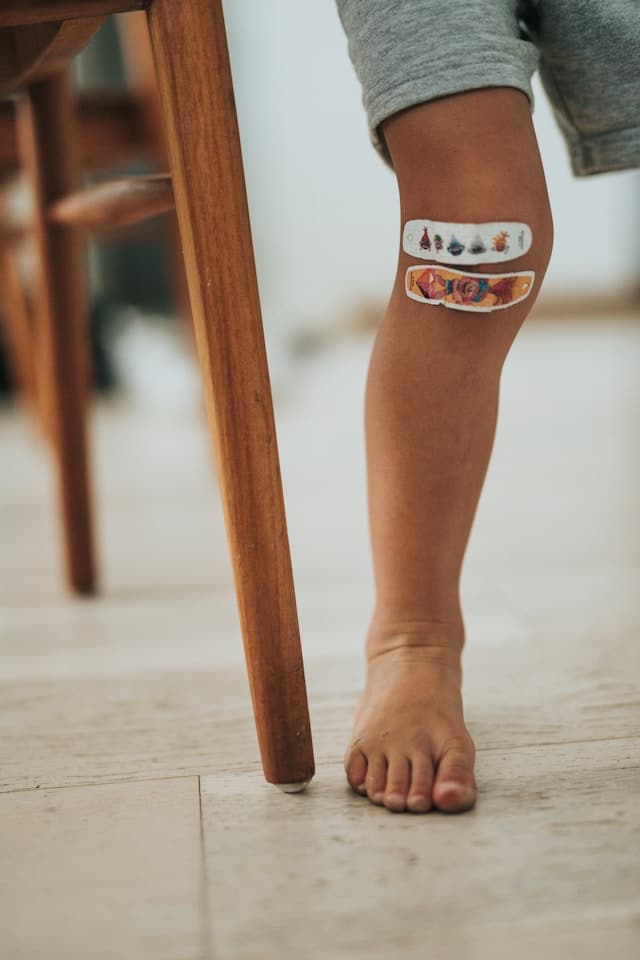What Are the Health Benefits of Nordic Walking for Knee Osteoarthritis?

As you cross the threshold of a certain age, the body begins showing signs of wear and tear. Among the most common complaints is the pain and discomfort associated with joint diseases, especially knee osteoarthritis. While medication and therapy help to manage the symptoms, promoting mobility and strength is key to improving quality of life. This is where Nordic walking comes in. This simple, inexpensive yet highly effective exercise has been endorsed by scholars, health experts and even Google for its numerous health benefits.
The Nordic Walking Advantage
Before we delve into the benefits, it’s important to understand what Nordic walking is. This exercise is a physical activity that involves walking with specially designed poles, comparable to ski poles, to incorporate the upper body into the activity. This transforms a simple walk into a balanced, full-body exercise.
A lire en complément : How Do Interactive Voice Response (IVR) Systems Enhance Patient Follow-Up Care?
Engaging in this practice offers benefits that go beyond a morning stroll. It fosters strength, balance and flexibility, assisting in relieving the pain associated with osteoarthritis. Research and training groups around the world advocate for its use in arthritis management.
Pain Management Through Nordic Walking
Living with osteoarthritis can be challenging. The pain can be debilitating at times, limiting mobility and affecting your daily routine. Nordic walking can help.
Lire également : What Impact Does Deep Sea Diving Have on Blood Pressure and Cardiovascular Health?
The use of poles in this exercise redistributes body weight which eases the pressure on your knee joints. This results in reduced pain and inflammation. Furthermore, the rhythmical pattern of Nordic walking promotes the release of endorphins, the body’s natural pain killers, helping to manage discomfort effectively.
Strengthening the Body with Nordic Walking
While medication can help control pain and inflammation, strengthening the muscles supporting the joints is equally important. Nordic walking is an excellent way to help you achieve this.
The act of pushing off the poles while walking engages your upper body, leading to increased muscle strength. Regular Nordic walking can result in improved muscle tone, endurance, and strength in your upper body. This increased strength can provide better support for your knee joints, which in turn decreases the strain on them and helps to manage the symptoms of arthritis.
Nordic Walking and Balance
One of the significant challenges for individuals suffering from knee osteoarthritis is maintaining balance. As the condition progresses, it can lead to instability and a higher risk of falls. The use of poles in Nordic walking provides an additional point of contact with the ground, aiding in balance.
Moreover, the focus on coordination during this exercise can also help improve proprioception, the body’s sense of spatial awareness. This is particularly important as you age, as it helps reduce the risk of falls and other injuries.
Group Activity and Mental Health
Beyond the physical benefits, Nordic walking also promotes mental well-being. Group Nordic walking sessions provide a social outlet, which can significantly enhance your mood and reduce feelings of isolation often associated with chronic illnesses like knee osteoarthritis.
Furthermore, consistent physical activity such as Nordic walking has been shown to decrease symptoms of depression and anxiety. The endorphin release associated with this exercise leads to a positive mood boost, which can have a profound effect on your mental health.
To conclude, Nordic walking is more than a fad endorsed by scholars and analysts on Google. It’s a highly beneficial exercise that can be tailored to your needs and abilities. By incorporating Nordic walking into your routine, you can effectively manage your knee osteoarthritis symptoms, improve your overall health, and enhance your quality of life. Remember, it’s always a good idea to consult with a physical therapist or a trainer before starting any new exercise regimen to ensure it’s suitable for your specific needs.
The Crucial Role of the Upper Body in Nordic Walking
When we talk about Nordic Walking, one striking feature that sets it apart from regular walking is the active involvement of the upper body. Thanks to the usage of walking poles, Nordic walking is transformed from a lower-body-focused activity to a full-body workout, engaging a broad range of muscle groups.
The poles in Nordic walking are not just an accessory, but a key element of the exercise. The forward and backward motion during walking, combined with the push-off technique using the poles, engages the arms, shoulders, and upper back muscles. This upper body activity not only contributes to muscle strength but also promotes cardiovascular health and increases overall endurance.
Research studies, often referenced by Google Scholar, have shown that Nordic walking increases heart rate more than regular walking, leading to improved cardiovascular fitness. This exercise also significantly improves upper body endurance, as the continuous use of walking poles helps to build muscles in the arms, shoulders, and back.
Moreover, pole walking has been found to be beneficial for the hip joint. By involving the upper body, the impact on the lower joints, including the hip, is reduced, making this an ideal exercise for older adults experiencing joint pain or post-surgery recovery.
The Social Element of Nordic Walking
While the physical benefits of Nordic walking are significant, one aspect that is often overlooked is its social component. Joining a walking group is not only a fun way to stay active but also a great opportunity to socialize and meet new people.
Participating in a group activity can have profound effects on mental health. It can help to alleviate feelings of loneliness, reduce stress, and promote a sense of community. In fact, research has shown that older adults who participate in group activities like Nordic walking report higher levels of life satisfaction and improved mental health.
Furthermore, group walking can provide a supportive environment where individuals can motivate and encourage each other, making it more likely for them to stick to their exercise routine. A Nordic pole in each hand, surrounded by like-minded individuals can make the journey towards better health more enjoyable.
Conclusion: Embrace Nordic Walking for a Better Quality of Life
A diagnosis of knee osteoarthritis can feel daunting. The associated knee pain and mobility limitations can indeed be challenging. However, with appropriate management and physical activity, it is possible to lead an active life. Nordic walking, with its unique combination of physical and social benefits, is a commendable option.
Whether it’s about redistributing body weight to ease the pressure on your knee joints or engaging your upper body muscles for additional strength, Nordic walking has a lot to offer. Not to forget the mental health benefits that come with group activities and the sense of accomplishment that follows a good workout.
Remember, while Nordic walking is a low-impact exercise, it’s essential to consult with a physical therapist before starting, especially if you’re managing a condition like osteoarthritis. They can guide you through the correct technique, ensuring that you reap all the benefits Nordic walking has to offer without causing further discomfort. So, go ahead, pick up your poles, and step towards a healthier, happier you.
